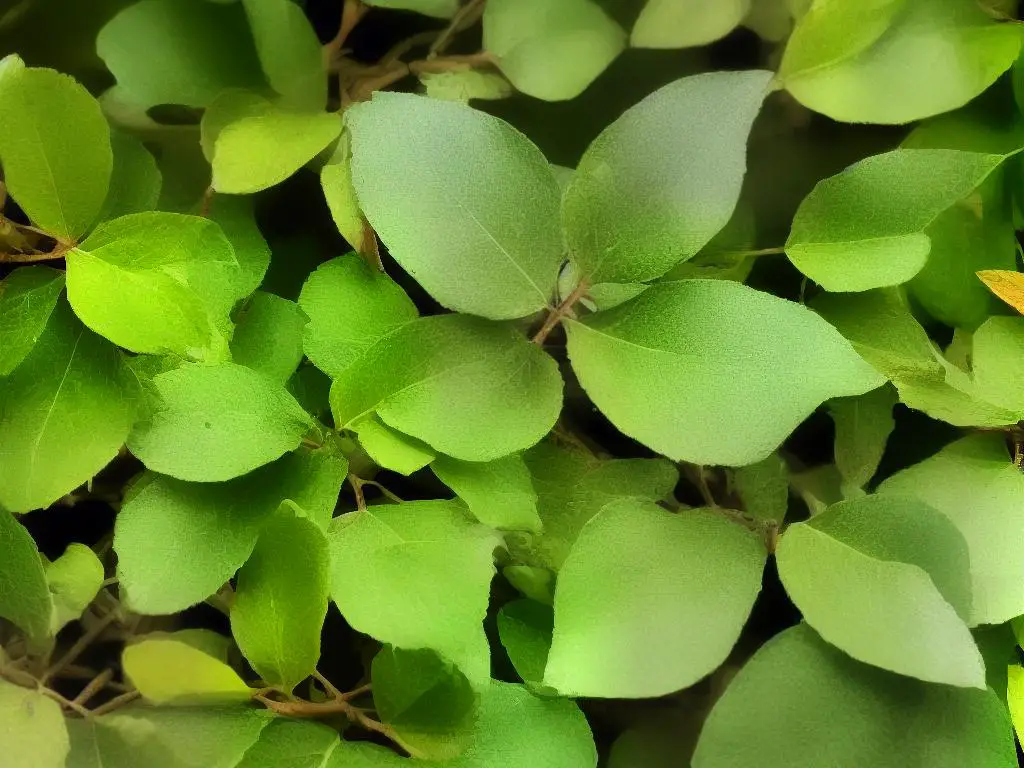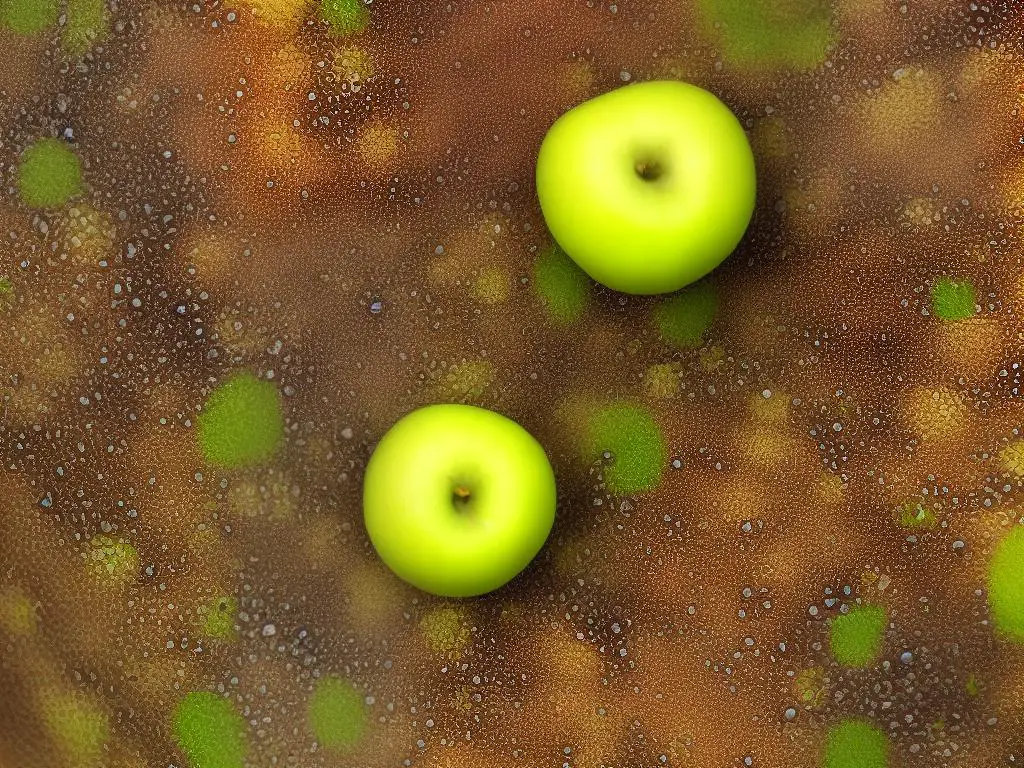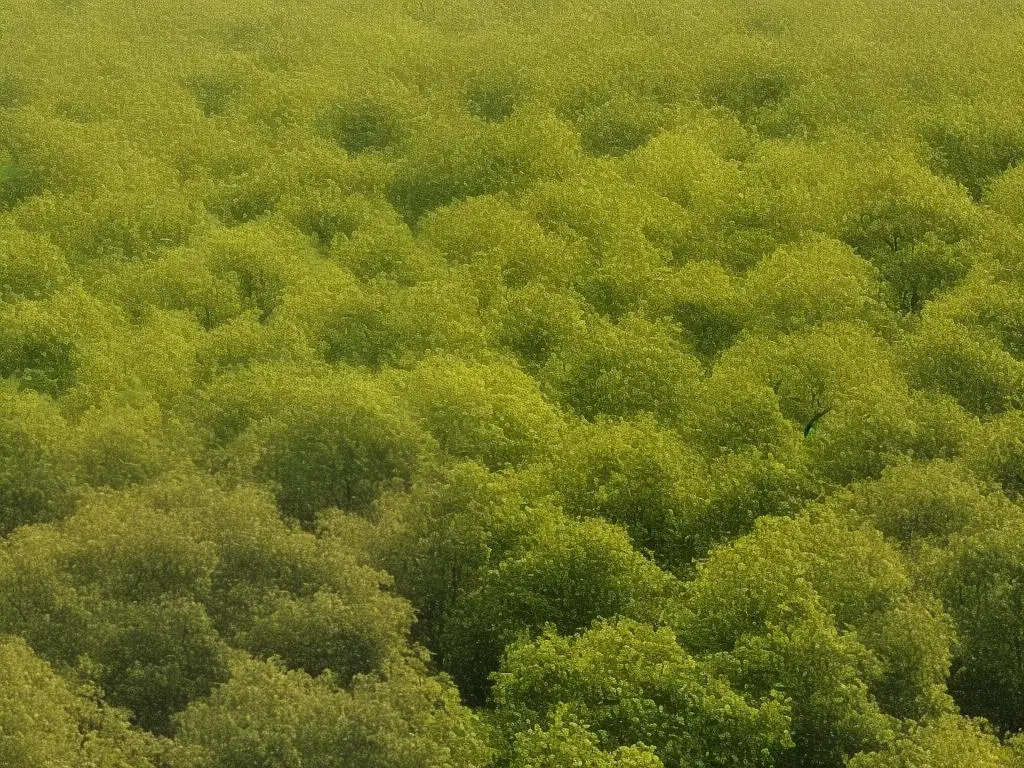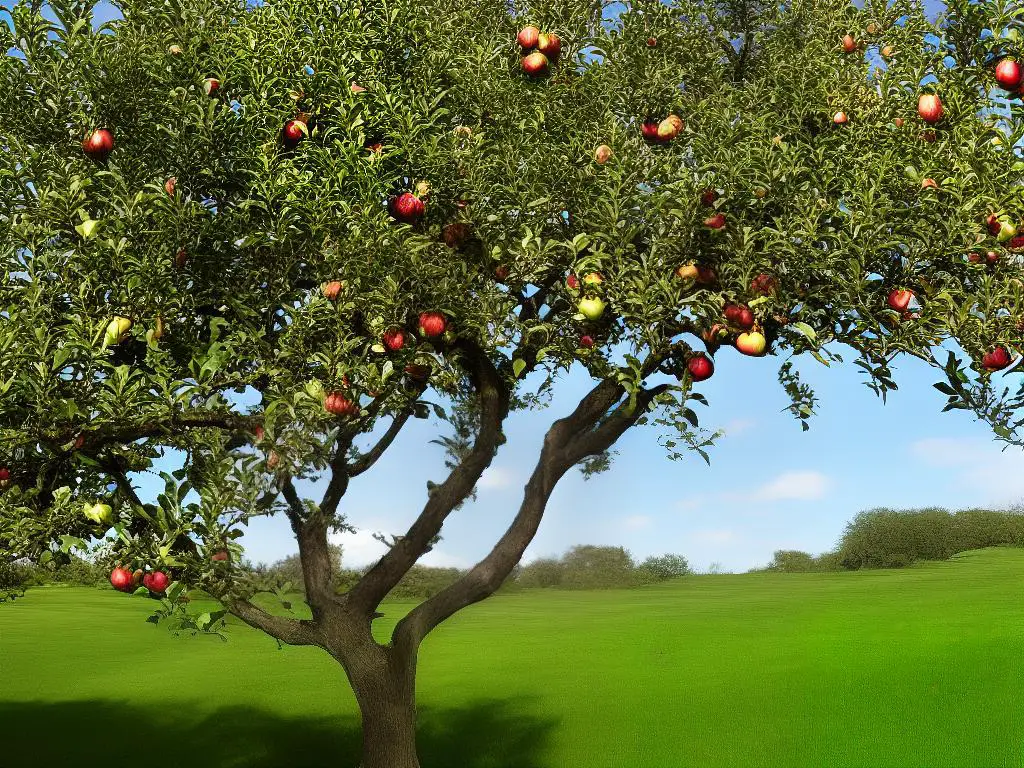Apple trees, known for their delicious and nutritious fruit, are unfortunately susceptible to a variety of diseases affecting their leaves. A healthy leaf canopy is crucial for the growth and productivity of the tree, making it essential for individuals to be well-informed about symptoms, causes, and treatments for such diseases. This knowledge will empower home gardeners, orchard owners, and the general public to take appropriate action in managing their apple trees effectively, ensuring a bountiful harvest and the overall health of these beautiful plants.
Identifying Apple Tree Diseases on Leaves
Apple trees are popular fruit-bearing trees that many people grow in their gardens and orchards. However, these trees are often susceptible to various diseases that can affect their leaves, which can impact their overall health and fruit production.
One of the most common symptoms of apple tree diseases on leaves is discoloration. For instance, apple scab is a fungal disease that causes olive-green to black spots on leaves, eventually leading to premature leaf fall. Powdery mildew, another fungal disease, causes a powdery white coating on leaves and can lead to distortion and stunted growth.
Deformities in apple tree leaves are another common sign of disease. Cedar-apple rust is a fungal disease that initially appears as yellow spots on the upper surface of leaves, while small cup-like structures develop on the lower surface. As the disease progresses, these spots and structures can enlarge and deform the leaves. Fire blight, a bacterial disease, can cause leaves to wilt and curl, appearing as if they have been scorched by fire, hence the name.
Another way to identify apple tree diseases on leaves is through the presence of spots. Frogeye leaf spot, a fungal disease, causes circular, grayish-white spots with dark-purple borders on leaves, and severe infections can lead to leaf drop. Alternaria leaf blotch is another fungal disease that creates dark, blotchy spots on older leaves, often surrounded by a yellow halo.
It is essential to monitor apple trees for signs of disease regularly and take prompt action when symptoms are detected. Early detection and treatment can help prevent the spread of pathogens and protect the health of the tree. Appropriate actions include pruning infected branches, using fungicides, or implementing cultural practices such as proper watering and sanitation.
Prevention is always better than cure when dealing with apple tree diseases. Selecting disease-resistant cultivars, maintaining proper tree spacing, and providing adequate care are all essential steps to keeping apple trees healthy and reducing the risk of disease. By staying vigilant and taking preventive measures, you can enjoy the beauty and bounty of your apple trees for many years to come.

Fungal Diseases and Infections
One common disease to watch for is apple scab, caused by the fungus Venturia inaequalis. This is a severe fungal disease affecting the leaves of apple trees. Symptoms include dark, velvety spots on the leaves, which later become larger and turn into brown or black lesions. Apple scab not only affects the leaves but also the fruit, causing similar lesions and potentially leading to fruit deformation. To manage apple scab, employ practices such as removing fallen leaves, pruning to increase airflow, and applying fungicides during the growing season to prevent the fungus from spreading and infecting new leaves.Powdery mildew, caused by the fungus Podosphaera leucotricha, is another fungal disease that commonly affects apple trees. This disease manifests itself as a white, powdery substance on the surface of the leaves, which can cause them to become distorted or stunted. Additionally, powdery mildew can affect the tree’s fruit production, as it can lead to poorly developed or deformed apples. To combat powdery mildew, it is crucial to maintain good air circulation around the tree through pruning, use resistant apple varieties, and apply fungicides specifically designed to target powdery mildew as needed throughout the growing season.Cedar-apple rust is caused by the fungal pathogen Gymnosporangium juniperi-virginianae, which requires two host species to complete its life cycle: apple trees and juniper trees. On apple leaves, this disease manifests as yellow-orange spots with a red border, which can grow larger as the disease progresses. Cedar-apple rust can cause defoliation and negatively impact fruit production if not treated. To manage cedar-apple rust, it is essential to remove any nearby juniper trees or plant rust-resistant apple varieties. Fungicides can also be applied at specific points in the growing season when leaves and flowers are developing to provide additional protection against the disease.Fire blight, caused by the bacterium Erwinia amylovora, is another disease affecting apple trees, though it is not a fungal infection. This disease primarily targets blossoms and shoots but can progress to the leaves if left unmanaged. Infected leaves may develop dark, water-soaked areas that eventually turn black, while infected shoots appear scorched or burned. Fire blight can cause significant damage to the entire tree if not treated promptly. Control measures include pruning out infected branches, removing any dead wood, applying streptomycin during bloom when conditions favor infection, and using resistant apple cultivars.In conclusion, apple trees are susceptible to a variety of fungal diseases and infections that can greatly impact the health of their leaves and consequently, the overall wellbeing of the tree. As a result, it is crucial to practice proper prevention methods and take timely action when issues arise. This ensures that trees remain healthy and produce an abundant harvest. By becoming familiar with the symptoms of common diseases such as apple scab, powdery mildew, and cedar-apple rust, as well as implementing effective management strategies, apple growers can safeguard their trees against these potentially harmful diseases.
Bacterial Diseases and Infections
In addition to fungal diseases, apple trees also fall prey to fire blight, a highly destructive bacterial disease caused by the bacterium Erwinia amylovora. This infection takes a toll on all parts of the apple tree, including the leaves. Early signs of fire blight on leaves include water-soaked spots that eventually darken to brown or black. As the disease advances, leaves may curl up and become necrotic, giving the tree a burnt appearance. In severe cases, the infection can lead to leaf drop, branch dieback, and eventually, the death of the tree.Bacterial spot, caused by the bacteria Xanthomonas arboricola pv. pruni, is another bacterial disease affecting apple trees. It primarily affects the leaves and fruit of the apple tree. Infected leaves initially develop small, water-soaked lesions that are often surrounded by a yellow halo. As the infection spreads, these lesions can enlarge and coalesce, causing significant leaf deformation. Over time, lesions may become necrotic and lead to leaf drop, impacting the overall health of the tree.Control and prevention of bacterial diseases in apple trees rely on a combination of cultural practices and chemical treatments. For fire blight, pruning infected branches during the dormant season can help reduce the spread of the disease. Sterilizing pruning tools between cuts and removing infected branches from the tree’s vicinity is crucial to avoid further contamination. In addition, applying copper-based sprays early in the growing season can help suppress the bacteria’s activity. Chemical treatments are more effective when combined with good orchard sanitation practices and proper tree spacing to promote air circulation and reduce humidity.For bacterial spot, managing the disease begins with planting resistant apple tree varieties or using disease-free rootstocks. Pruning to promote air circulation and reduce humidity and practicing good sanitation by removing fallen leaves and debris from the orchard are essential for controlling the spread of bacteria. Chemical treatments are also available and include copper-based sprays and bactericides. It’s crucial to apply these treatments in a timely manner, beginning before the onset of symptoms and continuing throughout the growing season as needed.One essential aspect of managing bacterial diseases in apple trees is proper fertilization and irrigation. Both over- and under-fertilization can stress trees and make them more susceptible to infection. To ensure appropriate nutrient levels are maintained, it’s best to test the soil. In terms of watering, it’s critical to avoid conditions that promote bacterial disease spread, such as excessive leaf wetness. Techniques like drip irrigation, which delivers water directly to the tree’s root zone, can help reduce overall humidity and lower the risk of infection.

Viral Diseases and Infestations
After understanding the importance of fertilization and irrigation, it’s essential to know common viral diseases like apple mosaic virus that affect apple trees and damage their leaves. This virus typically spreads through contact between infected and healthy plants, often due to the use of contaminated tools or grafting. Apple mosaic virus symptoms include irregular yellow patterns on the leaves, known as mosaics. Infected leaves may also become distorted, curled or necrotic, which can negatively impact the tree’s overall growth and fruit production.
Aphids are another major threat to apple tree leaves, commonly targeting the foliage. These small, soft-bodied insects feed on plant sap, causing leaves to curl and form a sticky residue called honeydew. Aphids reproduce rapidly, and their colonies can quickly grow to a large size if not controlled. The honeydew secreted by aphids can foster the growth of sooty mold, further harming the apple tree’s health. Additionally, aphids are known to transmit viruses between plants, making them an even more significant concern for apple tree growers.
Mites can also cause damage to apple tree leaves, with two common species being the European red mite and the two-spotted spider mite. Mites are microscopic arachnids that feed on plant tissue, causing the leaves to exhibit a bronze or red coloration and show signs of stippling. As with aphids, mite infestations can lead to early defoliation and reduced fruit yield, making monitoring and control an essential part of apple tree management.
Managing viral diseases and infestations in apple trees often involves a combined approach of cultural, biological, and chemical controls. Proper sanitation, including the removal of infected leaves and the use of disinfected tools, can help prevent the spread of viral diseases like apple mosaic virus. For pests like aphids and mites, encouraging natural predators such as ladybugs and lacewings can serve as an effective biological control method. In addition, monitoring pest populations regularly will help determine the appropriate window for interventions such as chemical controls.
Understanding the life cycles, damage, and control methods of various viral diseases and infestations is crucial for anyone involved in the cultivation of apple trees. By being informed on these subjects, individuals can take appropriate action to maintain the health of their apple trees, preventing significant damage to leaves and fruit production. This information provides a solid foundation for maintaining a healthy and productive apple tree, while emphasizing the importance of prevention and integrated pest management strategies.

Preventative Measures
An essential prevention method in protecting apple tree leaves from diseases is proper pruning. Regular pruning increases air circulation between branches, reducing the likelihood of pathogen infections. In addition, pruning allows sunlight to penetrate more easily, which supports the overall health and growth of the tree. It is vital to remove any dead, damaged, or diseased branches by making clean, angled cuts, preferably during the dormant season, to minimize the spread of diseases.
In addition to pruning, appropriate watering techniques play a critical role in preventing diseases in apple tree leaves. Overwatering or inconsistent watering can lead to an environment favorable to pathogens that cause diseases like root rot, which significantly impacts the health of the entire tree. To avoid this, it is recommended that low-volume, drip irrigation systems are used to maintain consistent moisture levels without overwatering. Additionally, the early morning is the best time to water apple trees as it allows the foliage to dry off during the day, reducing the chances of fungal infections.
Proper fertilization is another essential strategy for keeping apple tree leaves disease-free. By providing the necessary nutrients, the apple tree becomes healthier and more robust, making it less susceptible to infections. A soil test can help determine which nutrients are lacking in the soil, allowing for appropriate amendments to be made. It is important to avoid over-fertilizing, as excessive amounts of certain nutrients can lead to an imbalance, potentially leading to a weaker tree. Organic materials, such as compost or aged manure, can also be beneficial in enriching the soil and improving the overall health of the apple tree.
Utilizing organic treatments is another effective approach to combat apple tree diseases without resorting to synthetic pesticides. Options include horticultural oils, neem oil, and biological fungicides, all of which can be sprayed on the tree leaves to target specific diseases and pests. Timing is crucial with organic treatments – applying them during the early stages of disease development significantly increases the chances of successfully containing or preventing the spread of the disease. Moreover, it is essential to follow label instructions for the proper use and application of these treatments to ensure the safety of both the tree and the environment.
Planting disease-resistant apple tree varieties helps reduce the risk of disease development. By choosing cultivars that are less susceptible to common apple tree diseases, these varieties typically require fewer disease management interventions, resulting in healthier trees overall. Examples of disease-resistant apple tree varieties include Liberty, Enterprise, and Goldrush. It is also crucial to plant these trees in optimal conditions, taking into account the soil quality, drainage, and sun exposure. By practicing these prevention methods, apple tree leaves can be protected from diseases, contributing to a healthier and more productive tree.

Ultimately, being well-versed in various apple tree diseases on leaves and their management strategies allows individuals to handle these challenges with confidence and expertise. This knowledge helps maintain the health and vitality of apple trees, protect their valuable fruit, and ensure the continued enjoyment of apple products for years to come. Remember, prevention is always better than cure, and utilizing proper care techniques can significantly reduce the risk of disease for your apple trees. Keep learning, stay vigilant, and enjoy a thriving apple tree in your garden or orchard.
